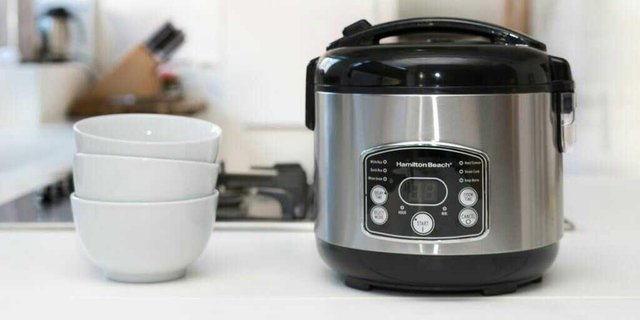The Rice Cooker's Rarely Knowable History
Rice cooker is an automatic kitchen tool designed to boil or steam rice. This electronic device consists of heat source, cooking bowl and thermostat.
The thermostat can measure the temperature of the cooking bowl and control the heat. As technology advances, more sophisticated rice cookers may have more sensors and other components.
The term rice cooker was previously pinned on non-automatic flavored cookware that has an ancient history, a ceramic steam device in 1250 BC which is on display at the British Museum. Now, the name applies mostly to an automated stove.
Rice cookers or electric rice stoves are developed in Japan, where they are known as 'pressure cookers suihanki'. The working principle of this tool involves a bowl filled with rice and water.
While cooking, the mixture of rice and water is heated in full force. Water can reach a temperature of 100 degrees Celsius. When it is ripe, the water dries and has been absorbed by the rice or rice and the emergence of water vapor from the heating.
Some sophisticated rice stoves can switch to low-power heating mode and keep a safe temperature of about 65 degrees Celsius.
Cooking rice traditionally requires constant attention to ensure the rice can be cooked properly and not burned. Electric rice cookers automate the process by controlling heat and time mechanically or electronically.
However, precision is also required when using a rice cooker. This technology reduces cooks' engagement, but they also need to prepare rice and use the correct amount of water.
Wikipedia explains, depending on the quantity, it takes approximately 20 minutes to 1 hour the use of electric rice cooker to cook rice. Some advanced models can count from cooking time to completion time.
The time taken for cooking rice depends on the amount of rice, the strength of the heating element and the atmospheric pressure, so it is not constant.
History of Rice Cooker
The history of rice cooker seems to have started in 1937 in Japan, when it was still a rectangular wooden box with two electrodes attached to the opposite end.
To cook rice, the box is full of washed rice and water, then the current is applied. This will cause the water to boil. However, there are risks associated with high electric shock, making it unsuitable for home cooking.
In 1945, Mitsubishi Electric Corporation of Japan was the first company to produce a commercial rice cooker. Mitsubishi products are aluminum pans with heating coils in them. There is no automatic turn-off facility, and requires constant monitoring while cooking.
In the early development stage, rice house cookers use simple concepts to heat rice for cooking and turn off heaters as the temperature rises to a certain point. This method, however, is strongly influenced by variations in room temperature and often results in less cooked rice.
Many makers continue to experience failure in the ongoing trial and error approach. At this stage, there is even an experimental model that embeds heating elements in traditional wooden rice containers.
The first practical electric rice cooker was invented by Yoshitada Minami, who has a relationship with Toshiba Electric Corporation. It becomes possible to cook rice practically using a triple-chamber rice cooker (which provides heat insulation by the air layer).
